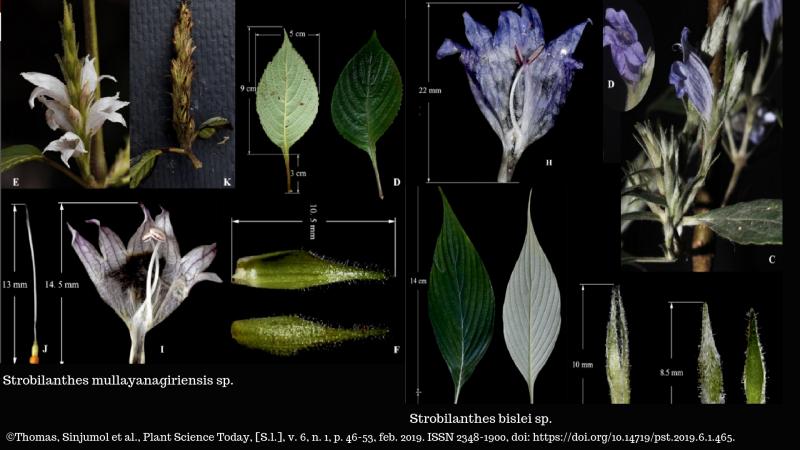
Every 12 years, the landscape of the Nilgiri Hills is covered with a blanket of purplish blue hues, thanks to the flowers of Strobilanthes kunthianus or Neelakurinji. In a recent study, researchers from the Carmel College Mala, Kerala, St. Thomas College Palai, Kerala, St. Joseph’s College, Tamil Nadu, and WWI Innovative Solutions, Kerala have discovered two new plant species belonging to the genus Strobilanthes, and have named them S. mullayanagiriensis and S. bislei.
Strobilanthes is a genus of flowering plants with around 350 species that are native to tropical Asia and Madagascar. The characteristic two-lipped, hooded flowers grow in the wild and transform the landscape with their shades of white, purple, pink and blue. The current study that was published in the journal Plant Science Today, adds two more species to this genus discovered in the Western Ghats of Karnataka.
S. mullayanagiriensis and S. bislei are plietesial species, which take 8 to 16 years to reach maturity. They flower synchronously, seed and then die in hordes, like the Neelakurinji. What sets them apart from their compatriots is the morphological differences of their pollen grains. The researchers of the study collected the Strobilanthes specimens from Chikmagalur and Hassan districts of Karnataka and compared them with herbarium specimens from India and abroad. They soon discovered that the ones they had collected did not match any of the recognised species of Strobilanthes, and were, in fact, new to science.
S. mullayanagiriensis was first reported from Chikmagalur and borrows its name from the Mullayanagiri peak of the Baba Budan Giri Hill ranges, where the plant commonly grows. The flowers are pale pink and blossom between the months of November and December. Although they look very similar to another known species from this genus, studies on their pollen grains and vegetative morphology revealed that they were actually a new species in themselves.
The other new species, S. bislei has blue flowers which bloom between the months of October and November. It has large, ellipsoid pollen grains that set it apart as a new species. The plant was found in Hassan and takes its name from Bisle Ghat, a biodiversity hotspot that is a part of the central Western Ghats.
The discovery of the two new species from the biodiversity hotspot that is the Western Ghats, opens up the possibility that there are many yet to be discovered flora and fauna lurking in these mountains. In the absence of sustainable conservation programs in an already-fragile ecosystem, we may end up losing these species even before we know they exist.





